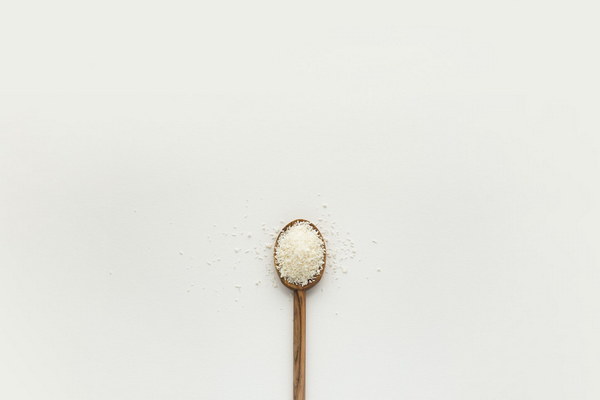Balancing Body Heat and Coldness A Comprehensive Guide to TCM Remedies for Upper Heat and Lower Cold
In Traditional Chinese Medicine (TCM), the concept of balancing the body's Yin and Yang is fundamental to maintaining health and preventing illness. One common imbalance that TCM practitioners often encounter is upper heat and lower cold. This condition is characterized by a feeling of warmth or heat in the upper part of the body (head, neck, and chest) and coldness in the lower part (abdomen, lower back, and limbs). Here, we explore the causes, symptoms, and TCM remedies for this imbalance.
Causes of Upper Heat and Lower Cold
Upper heat and lower cold can arise from various factors, including:
1. Diet: Consuming excessive amounts of spicy, fried, or sugary foods can lead to an accumulation of heat in the upper body.
2. Lifestyle: Lack of exercise, stress, and overexposure to cold can cause coldness in the lower body.
3. Stagnation: Poor circulation due to emotional stress or physical inactivity can lead to coldness in the lower body and heat in the upper body.
4. Genetic factors: Some individuals may have a predisposition to this imbalance due to their genetic makeup.
Symptoms of Upper Heat and Lower Cold
The following symptoms may indicate an upper heat and lower cold imbalance:
1. Heat symptoms: Red face, hot flashes, dizziness, irritability, and a red tongue with a thin, yellow coating.
2. Cold symptoms: Cold hands and feet, abdominal pain, bloating, diarrhea, and a pale tongue with a white coating.
TCM Remedies for Upper Heat and Lower Cold
TCM offers a variety of remedies to help balance the body's Yin and Yang and alleviate the symptoms of upper heat and lower cold. Here are some common approaches:

1. Herbal Medicine: TCM herbs can be prescribed to address the root cause of the imbalance. Common herbs for upper heat and lower cold include:
- Scutellaria baicalensis (Huang Qin): Clears heat in the upper body.
- Rehmannia glutinosa (Shu Di Huang): Nourishes Yin and blood in the lower body.
- Angelica sinensis (Dang Gui): Promotes blood circulation and warms the body.
- Cinnamomum cassia (Rou Gui): Warms the kidneys and improves circulation.
2. Acupuncture: Acupuncture can help balance the body's energy flow and alleviate symptoms of upper heat and lower cold. Specific points may be selected to clear heat from the upper body and warm the lower body.
3. Moxibustion: Moxibustion involves burning moxa (a substance made from dried mugwort) near the skin's surface to stimulate circulation and warm the body. This technique is particularly effective for treating cold symptoms in the lower body.
4. Dietary Adjustments: Adjusting your diet can help alleviate the symptoms of upper heat and lower cold. Avoid spicy, fried, and sugary foods, and consume more cooling foods such as:
- Vegetables: Cucumber, watermelon, and celery.
- Fruits: Lemon, lime, and pear.
- Grains: Brown rice and quinoa.
5. Lifestyle Changes: Regular exercise, stress reduction techniques, and adequate sleep can help improve circulation and balance the body's energy.
Conclusion
Balancing upper heat and lower cold in TCM is a comprehensive approach that involves herbal medicine, acupuncture, moxibustion, dietary adjustments, and lifestyle changes. By addressing the root cause of the imbalance and alleviating symptoms, TCM can help you achieve a state of harmony and well-being. If you suspect you have an upper heat and lower cold imbalance, consult a TCM practitioner for personalized advice and treatment.









